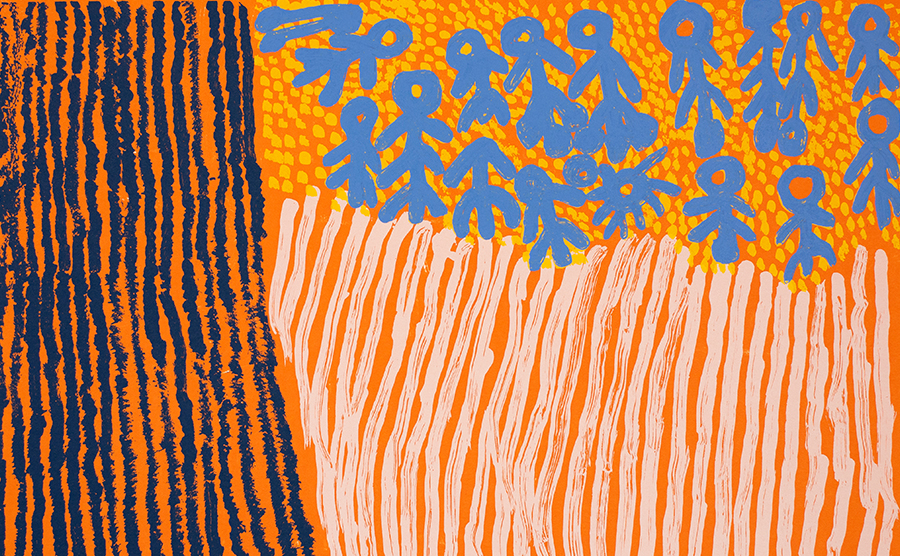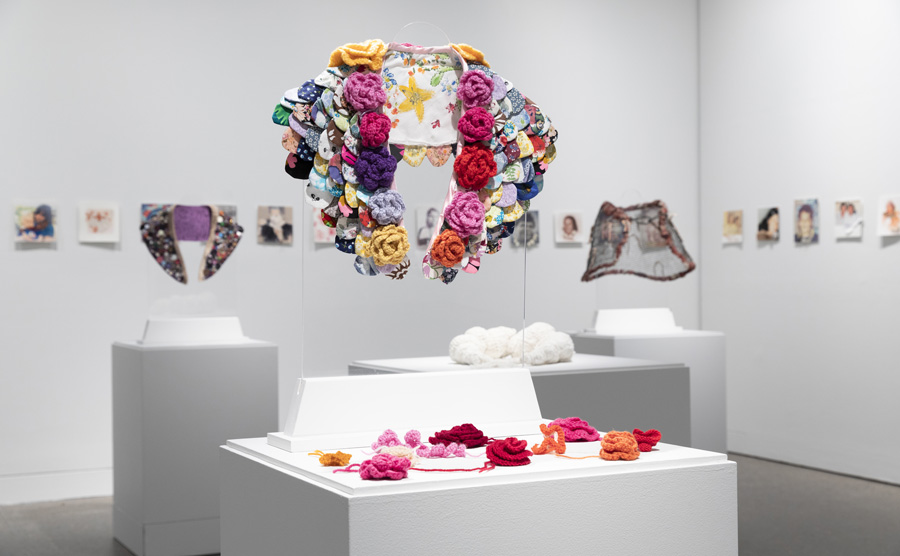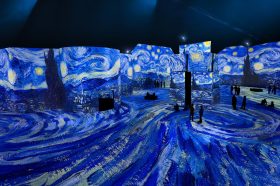As a metropolitan gallery, Hazelhurst Arts Centre is located on Sydney’s fringe, but it is not quite ‘distant’ enough from the city centre to be classified as a regional gallery. While that may present mild challenges, it also presents grand wins. Located close to the La Perouse Aboriginal community, the gallery is in a unique position to ensure First Nations voices are embedded within gallery programming, and to nurture the careers of local Aboriginal artists.
This is demonstrated in the new exhibition Quintet, which features the solo exhibition Threads of the detachables by Southern Sydney First Nations artist Kerry Toomey.
Quintet is a series of five concurrent solo exhibitions that takes a deeper look at artists at a pivotal point in their careers.
It coincides with the exhibition, Ikuntji Artists Printmaking, demonstrating the breadth of the gallery’s First Nations lens across all aspects of programming, and yet finding connections across material and narrative.
Carrie Kibbler, Curator at Hazelhurst, told ArtsHub: ‘First Nations programming is something we have always done, but more recently we have made it part of everything we are doing. We didn’t want to just have that annual NAIDOC exhibition – which always felt a bit tokenistic. Today, that First Nations-led curatorial approach and lens sits core to our exhibition and public programming,’ said Kibbler.
‘With both these exhibitions, it has been very much about working collaboratively with the art centres and artists, which is how is we approach all projects when working with First Nations art centres and communities.’
Kibbler said that the gallery keeps up-to-date with what the art centres and their artists are doing and making, adding this is how they ‘saw the new work Ikuntji Artists were doing with fabrics and fashion, and invited them to have a show with Hazelhurst and bring it to our audiences’.

Eunice Napanangka Jack Kuruyultu fabric design. Image courtesy the artist and Ikuntji Artists.
From Paris to Gymea
Ikuntji Artists was the first art centre established for women of the Western Desert art movement, and is located at Haasts Bluff, about 230 kilometres west of Alice Springs.
While it started in the 1990s making T-shirts and acrylic paintings on linen and handmade paper, today it is internationally celebrated for its bold colours and brush strokes, which have moved to fabrics and taken hold on the fashion industry.
‘Ikuntji are doing amazing things; they have just been in Paris wearing their fabrics with the Eiffel Tower in the background, and now their work can be seen at Hazelhurst,’ said Kibbler.
When Ikuntji was recently in Sydney for Fashion Week, they visited Hazelhurst to plan the exhibition.
‘We were initially thinking of doing a 30th anniversary show, presenting a whole range of different things, but after having discussions on how to evolve the exhibition – and seeing the gallery space – it was about narrowing that focus point, and it made sense to highlight their celebrated fabrics,’ explained Kibbler.
Along with a selection of vibrant Ikuntji prints/works on paper, the gallery will display a selection of signature Ikuntji fabrics, offering an energised and immersive view of Ikuntji stories and Country.
Kibbler said that around 3000 visitors move through the Broadhurst Gallery each week where the Ikuntji Artists will be presented.
Career development for local First Nations artists
This is not Kerry Toomey’s first exhibition with Hazelhurst, showing a few years ago in the Broadhurst Gallery, and in the group exhibition last year, Wuliwulawala – Dharawal Women Sharing Stories, developed in partnership with La Perouse Local Aboriginal Land Council, Gujaga Foundation, Kurranulla Aboriginal Corporation, Sutherland Shire Council’s Aboriginal Advisory Committee and women Elders from the La Perouse and southern Sydney region, said Kibbler.
Wuliwulawala was originally programmed to coincide with the 250-year Endeavour anniversary of two cultures meeting but, rather than an exhibition focused on Cook, and men, to focus on the women – we know they were there.
‘We were interested in looking at women who are making leaps in their careers, and really pushing forward, and giving them an opportunity to make a cohesive body of work,’ continued Kibbler. ‘And Kerry stood out to us.
‘This is something that is really important to me as a curator; we can’t talk about contemporary art, or what contemporary art is doing, without our First Nations artists having a voice in that conversation, so when looking at any exhibition or programming we start with that question: how are First Nations artists part of this?’
Since joining the gallery in 2013 – and bringing her history of working in art centres, from Western Australia to Central Australia and Queensland – Kibbler has curated a major survey of artists from Aṉangu Pitjantjatjara Yankunytjatjara (APY) Lands, plus exhibitions highlighting Aboriginal artists from Iltja Ntjarra (Many Hands) Arts Centre, Maruku Arts from Central Australia, and Ninuku Arts, also from APY Lands.
Quintet is showing until 13 November at Hazelhurst Arts Centre, while Ikuntji Artists Printmaking is being presented from 11 to 22 November in the Broadhurst Gallery. Both exhibitions are free.





